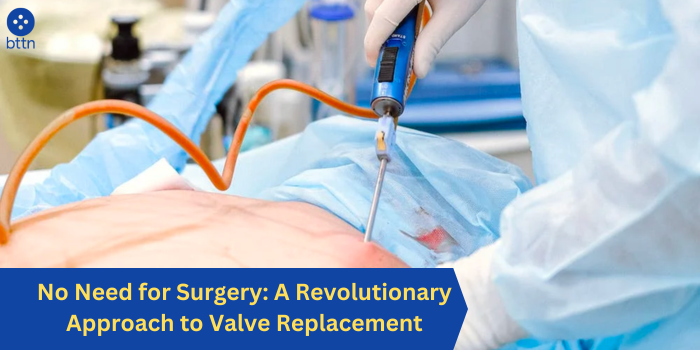
No Need for Surgery: A Revolutionary Approach to Valve Replacement
Posted by Pankaj Dhiman on Sep 27th 2023
Heart valve disease is a common condition that can affect people of all ages. It is estimated that over 5 million Americans have heart valve disease, and this number is expected to increase in the coming years.
In the past, the only way to treat heart valve disease was with open-heart surgery. This is a major surgery that requires a large incision in the chest and can be risky for some patients.
However, in recent years, there has been a breakthrough in the treatment of heart valve disease with the development of transcatheter aortic valve replacement (TAVR). TAVR is a minimally invasive procedure that allows for the replacement of a diseased heart valve without the need for open-heart surgery.
What is TAVR?
TAVR is a procedure that is performed by a cardiologist in a cardiac catheterization lab. During the procedure, a catheter (a thin, flexible tube) is inserted into a blood vessel in the leg or groin and threaded up to the heart.
The catheter is equipped with a replacement valve. Once the catheter is in place, the new valve is deployed and positioned over the diseased valve. The new valve then takes over the function of the diseased valve.
Benefits of TAVR
TAVR offers a number of benefits over open-heart surgery, including:
- Minimally invasive: TAVR is a minimally invasive procedure that does not require a large incision in the chest. This can lead to a faster recovery and less pain.
- Reduced risk of complications: TAVR is associated with a lower risk of complications than open-heart surgery, such as bleeding, infection, and stroke.
- Shorter hospital stay: TAVR patients typically have a shorter hospital stay than open-heart surgery patients.
- Quicker recovery: TAVR patients typically experience a quicker recovery than open-heart surgery patients and are able to return to their normal activities sooner.
Who is eligible for TAVR?
TAVR is an option for patients with severe aortic stenosis who are at high risk for complications from open-heart surgery. Aortic stenosis is a condition in which the aortic valve narrows, restricting blood flow from the heart to the body.
TAVR may also be an option for patients with mitral valve regurgitation, a condition in which the mitral valve does not close properly, allowing blood to leak back into the heart.
How is TAVR performed?
TAVR is typically performed under general anesthesia. However, some patients may be able to have the procedure under local anesthesia with sedation.
During the procedure, the patient lies on a table and a catheter is inserted into a blood vessel in the leg or groin. The catheter is then threaded up to the heart under X-ray guidance.
Once the catheter is in place, the replacement valve is deployed and positioned over the diseased valve. The new valve then takes over the function of the diseased valve.
What to expect after TAVR
After TAVR, patients will typically stay in the hospital for one to two days for observation. During this time, the medical team will monitor the patient's heart function and check for any complications.
Once the patient is discharged from the hospital, they will need to follow up with their cardiologist regularly. TAVR patients will also need to take blood thinners to prevent blood clots from forming on the new valve.
Conclusion
TAVR is a revolutionary approach to heart valve replacement that offers a number of benefits over open-heart surgery. It is a minimally invasive procedure with a lower risk of complications and a shorter hospital stay. TAVR is a good option for patients with severe aortic stenosis who are at high risk for complications from open-heart surgery.
Additional Information
In addition to the benefits listed above, TAVR is also a good option for patients who are older or have other medical conditions that make them high-risk for open-heart surgery. TAVR can also be performed on patients who have previously had open-heart surgery.
Another benefit of TAVR is that it is typically performed under local anesthesia, which means that patients are awake during the procedure. This can be helpful for patients who have concerns about general anesthesia.
If you are considering TAVR, be sure to talk to your doctor to see if it is the right option for you.





























































